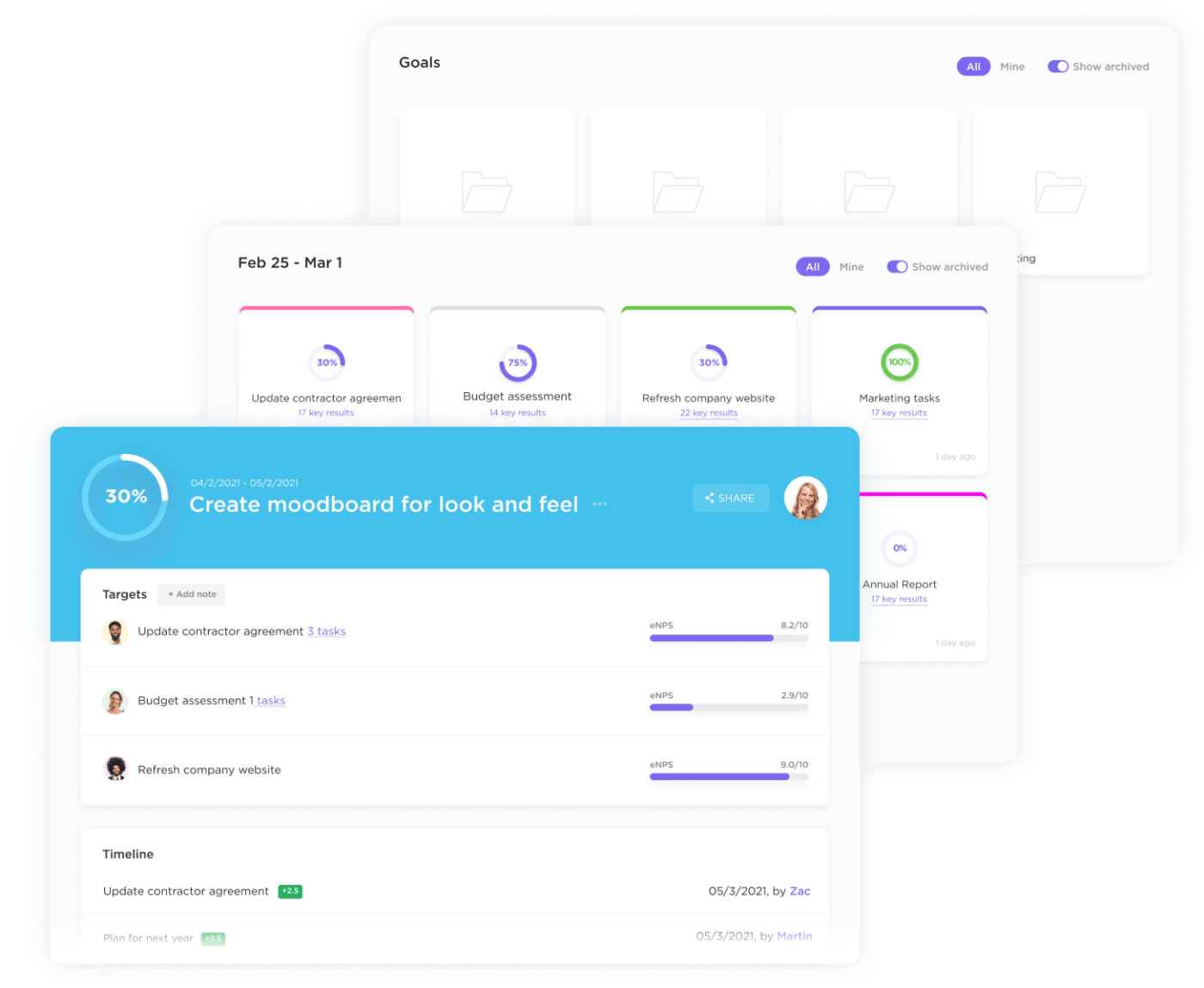How to Use a Coaching Leadership Style: The Ultimate Guide for Managers at Work

Sorry, there were no results found for “”
Sorry, there were no results found for “”
Sorry, there were no results found for “”
The business world today is far different from what it used to be. According to a Gartner HR survey, 77% of employees now place great importance on receiving support from their respective managers. When businesses place high expectations on employees, the latter also have high expectations from managers, looking at them for support toward personal and professional growth.
In such a scenario, how can you be an effective manager at your workplace, meet each employee’s expectations, and positively impact every individual’s engagement, productivity, and overall life? This is where adopting a coaching leadership style—the style adopted by some of the best managers and leaders in the world—becomes important.
Let’s explore the important aspects of coaching leadership style, including its key characteristics, how it helps you be a better manager, its overall impact on your team, and much more.
A coaching leadership style is a transformative approach wherein the managers and leaders coach their team. They act as guides, helping their team members discover and nurture their talents, improve productivity within their workplace, and reach their full potential over time.
Besides coaching leadership, there are many different managerial styles, each with its own pros and cons. So, what makes one style better, and what sets it apart from others?
Unlike the bureaucratic, transactional, and autocratic leadership styles, which are rigid and follow traditional power dynamics, the coaching leadership style, as mentioned, is a transformative tool.
It doesn’t emphasize exerting power or control or involve a chain of command. Instead, it focuses on helping employees become the best version of themselves through support, guidance, compassion, encouragement, constructive communication, and clear goal-setting.
Coaching as a leadership style emerged in the 1960s when Paul Hersey and Kenneth Blanchard developed the theory of situational leadership. This is a style of leadership wherein the leaders adopt a leadership strategy depending on the circumstances, ability, and willingness of individuals in the workplace.
According to Hersey and Blanchard, situational leadership consists of four leadership styles: directing, supporting, coaching, and delegating. Once the concept of coaching leadership originated, it started gaining prominence due to mentions in other situational and transformational leadership theories that developed after the 1970s.
To be a successful coaching leader, you should know the key characteristics that are central to the style of coaching leadership.
A central characteristic of the coaching leadership style is leadership itself. Coaching leaders see their team as individuals with their own strengths, weaknesses, goals, and aspirations. They mentor them to build on each of their strengths and improve their performance in the workplace.
Unlike other leadership styles, a coaching leadership style focuses just as much on the growth of individuals as on the growth of the organization. Coaching leaders give their team members the space they need for professional development. This improves team capabilities, bridges skill gaps, and benefits the organization in return.
To be effective, coaching leaders need to coach their team in a meaningful way that resonates with every individual member of the team. The coaching approach requires the soft skill of emotional intelligence, that is, the ability to understand one’s own emotions and the emotions of others around oneself. Thus, emotional intelligence forms a key component of coaching leadership.
To build this crucial skill, start by practicing the following:
Effectively using the skill of emotional intelligence helps you truly understand your team members and build meaningful connections with them.
Another key component of a coaching leadership style is the participation of the team. A coaching leader encourages every team member to express their thoughts and ideas freely. They encourage collaboration, actively involving every team member in decision-making, problem-solving, and goal-setting. This type of leader makes team members feel heard and valued and empowers them to take ownership of their work.
Thus, a coaching leader helps team members build their communication and collaboration skills and develop better relationships with one another.

An effective coaching leader motivates and guides employees to achieve their goals.
Coaching leaders provide constructive feedback, acknowledge achievements, and provide opportunities for professional growth. This instills a sense of purpose and ownership and fosters intrinsic motivation among employees.
Besides enhancing employees’ motivation, coaching leaders help employees recognize their goals and engage in long-term goal setting. They provide the support, guidance, and encouragement that employees need to strike a balance between the achievement of their personal and professional goals and organizational goals.
Here are some strategies you can use to effectively manage your team using the coaching leadership style:
Coaching leadership aims to achieve the vision of individuals alongside the organization’s vision. To help team members achieve their vision, you should first understand their aspirations and desires. One efficient way to do this involves holding regular one-on-one meetings with each member.
In these meetings, you can use a mix of two kinds of questions:
As managers and leaders, you have a lot on your plate. Scheduling and tracking one-on-one meetings on your own becomes cumbersome over time.
That’s why using tools like the ClickUp Meeting Tracker Template is a good idea. This template allows you to keep track of each meeting with ease, access an overview of meeting results and action items, and conveniently update the timeline if any changes or adjustments need to be made.

The coaching leadership style involves setting long-term goals. After developing a better understanding of your team members, it’s time to set goals to help them reach where they want to reach in terms of personal and professional development.
While setting development goals with each team member, it’s better to employ the SMART goals system, which helps you create goals that are:
Once you have created SMART goals, it’s time to start tracking them. Using tools like ClickUp Goals makes it possible for you and your employees to track goals with ease. This feature allows you to set clear objectives and key results. You can also break down big goals into smaller, compact goals, track progress, and identify milestones. You can also make timely adjustments if necessary.

A key aspect of coaching leadership is feedback, more specifically, providing personalized feedback to each team member. One of the main objectives of providing feedback is to help employees improve their performance and their confidence.
When giving feedback, it’s important to ensure:
Providing feedback and follow-up feedback to each employee is a laborious process. However, using tools like ClickUp’s Assigned Comments feature allows you to provide timely feedback to team members on tasks. You can give suggestions and share insights and resources with your team members in real time. Timely advice and recognition are key to your team’s growth and learning.

Managers who have a coaching leadership style play an active role in their team’s development. As a coaching leader, you should help your team continuously grow and develop skills. This involves monitoring their progress, providing guidance and support, and adjusting their strategies as needed.
One effective way to oversee and monitor your team’s development without micromanaging is by utilizing tools such as ClickUp Views. The 15+ customizable views in ClickUp give you the flexibility to organize and view work the way you like. For example, you can:
ClickUp’s customizable views let you monitor the performance of each team member on tasks and projects, identify any potential roadblocks or bottlenecks, and make quick adjustments to ensure that your team stays on track. Additionally, you can identify development milestones and offer the recognition and appreciation your team members deserve.
This feature helps you, as a project leader, stay organized and on top of tasks to effectively manage and drive your team toward success.
Before implementing the coaching style of leadership, you should know that it comes with its own challenges and obstacles, such as the following:
Coaching leadership focuses on the development of team members on an individual level. Coaching and mentoring team members one-on-one requires a lot of time and effort on the manager’s part. Since leaders already have to manage a lot of work, such as meetings, tasks, and projects, which take up a huge chunk of their time, they have little time left for anything else.
Some effective ways to tackle this challenge include using task management software and automation tools such as ClickUp Brain.
ClickUp Brain allows you, as a manager or leader, to automate task and project management. You can automate repetitive work, such as the generation of sub-tasks, updation of task and project statuses, generation of task and project summaries and reports, and much more. Thus, ClickUp Brain saves time that you can invest in coaching and mentoring your entire team, one member at a time.

Pro-Tip: To utilize time smartly after employing automation tools, it’s best to keep track of your time using ClickUp’s Time-Tracking feature. This tool allows you to organize, adjust, and track time with ease, so you can devote more time and effort to coaching your team.
You might encounter some team members who are more resistant to change than others. This is because change requires them to adopt new practices and ways of working. They might prefer a more traditional leadership style, struggle to adapt to a change in leadership style, and need more time and support than other team members.
One effective way to tackle resistance to change involves balancing the coaching leadership style with the situational style of leadership. This strategy involves adjusting your style according to the work style of an individual. It will help expose and introduce resistant members to the benefits of a coaching leadership style in appropriate situations and help them fully adapt to it over time.
A coaching style of leadership has a nurturing approach. Due to this, individual team members can become overly reliant on their coaching leader or manager over time for decision-making, guidance, and goal-setting purposes.
This excessive dependency hinders an individual team member’s growth by impacting their independence and capacity for decision-making and problem-solving. To prevent this, coaching leaders need to strike a balance between providing guidance and encouraging self-sufficiency.
Coaching leadership has a direct, strong, and positive correlation with employee engagement. A coaching manager with a leadership philosophy emphasizing guidance, encouragement, and empowerment of every individual team member makes them feel valued, supported, and accountable. This helps improve their engagement and productivity in the workplace.
Besides enhancing employees’ level of engagement, a coaching leadership style has a positive influence on:
The coaching leadership style is a high-engagement style of managing teams. Adopting it as a manager helps improve your coaching skills and makes you a better cross-functional team leader. This style of leadership works particularly well when managing teams that are talented but lacking motivation or team spirit. It is also effective in situations where teams distrust management or when teams exist in silos.
By focusing on supporting and coaching individuals in the team, this leadership style benefits your employees, improving their engagement, job satisfaction, and performance. Further down the line, it benefits your organization with improved productivity, goal achievement, low turnover rates, and an increased bottom line.
Despite its multifaceted benefits, implementing a coaching leadership style can be challenging, and it’s important to keep preventative solutions handy. Tools like ClickUp provide you with the assistance you need with project and task management and time tracking. As a reliable, customizable productivity and collaboration tool with advanced features, ClickUp helps you easily manage and coach teams of all sizes.
To become the ultimate coaching manager at work, sign up with ClickUp today.
© 2025 ClickUp